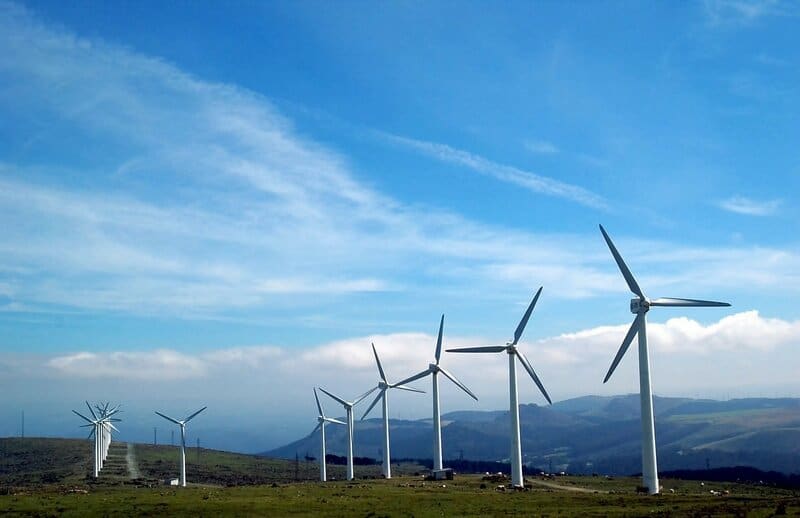The trade of natural resources and energy, including biomass, fossil fuels, minerals and metals, has increased dramatically over the past 50 years. The extraction and processing of natural resources is accelerating biodiversity loss, water stress and climate change. Such extraction is predicted to double by 2060, illustrating the urgent need for new, sustainability-focused trade rules to protect the planet, such as those that encourage a move to a circular economy.
—
The Environmental Impact of Trade
A report published in late 2020 by the United Nations Environment Programme (UNEP), in collaboration with the International Resource Panel (IRP), issues a stark warning on the environmental cost of trade. The current extraction and processing of the planet’s natural resources accounts for over 90% of our biodiversity loss and water stress, and approximately 50% our climate change impacts.
This is driven by an increasing global demand for material resources like biomass (wood and crops for food, energy and plant-based materials), fossil fuels (coal, natural gas and oil), metals (iron, aluminium and copper) and non-metallic minerals (sand, gravel and limestone).
Typically, high-income countries import from middle and low-income exporting countries, shifting the environmental burden to these countries. Such nations often have less stringent legal commitments to reducing greenhouse gas emissions, alongside weaker environmental standards, causing greater environmental degradation in these countries. This can accentuate inequalities and cause health impacts associated with the extraction and processing activities.
The outsourcing of electronic goods to China exemplifies this issue. For instance, if someone in the UK buys an iPhone, it is China, not the UK, that is handed the responsibility of the emissions. Not only does this mask the UK’s true greenhouse gas emissions, it also avoids the strict emissions control the manufacturer would be subjected to if the iPhone was made in the UK. China also must deal with the waste produced by electronics. 70% of global electronic waste ends up in China, causing serious environmental damage and permanent health risks including increased incidences of cancers and miscarriages.
You might also like: Shipping Line Aims for First Carbon-Neutral Container Ship by 2023
The Solution
The solution lies with a global shift towards a circular economic model. Currently, the demand for natural resources is driven by a linear economic model of take-make-use-discard. Instead, a new and innovative approach must be taken, where raw materials are thought of as nutrients that must be recycled, just as in nature. Businesses would use fewer resources, recycle more and extend the life of their products. Consumers also have a duty to buy less, save energy and repair broken items instead of throwing them away.
In essence, circular processes can be grouped into four categories:
- Reduce by design: Reducing the amount of material used, particularly raw material, should be applied as an overall guiding principle from the earliest stages of design of products and services
- From a user-to-user perspective: Refuse, reduce and reuse
- From a user-to-business intermediary perspective: Repair, refurbish and remanufacture
- From a business-to-business perspective: Repurpose and recycle
The Benefits of a Circular Economy Model
Adopting the principles of a circular economy could reduce the need for material resource extraction immensely, minimising both energy use and the negative environmental impact of extracting natural resources. The IRP has predicted that sustainable consumption and production, alongside resource efficiency, emission reduction and carbon removal policies, could potentially decrease greenhouse gas emissions by 90% by 2060.
The report acknowledges that there may be some economic challenges for the middle and low-income countries that depend on exporting natural resources. However, the switch to a circular economy would give rise to an abundance of new industries that focus on repair and recycling. By 2060 it is predicted that overall, a greener economic model could boost global GDP by 8% – especially for low and middle-income nations.
Inger Andersen, the Executive Director of UNEP, said: “There’s this idea out there that we have to log, mine and drill our way to prosperity. But that’s not true. By embracing circularity and reusing materials we can still drive economic growth while protecting the planet for future generations.”
How Trade Rules Can Help
Trade agreements – both regional and multilateral – can play a crucial part in facilitating a global uptake of the circular economy model. The report calls on the World Trade Organisation to step up and prioritise the environment when setting out new regulations, with a specific focus on resource extraction.
The report also recommends that regional trade pacts promote investments in planet-friendly industries, disincentivise harmful fossil fuel subsidies, while incentivising trade in renewable products, and avoid undercutting global environmental accords.
Some high-income countries such as Japan and the Netherlands have already started to incorporate aspects of a circular economy into their policies. Lower-income countries have also followed suit; in 2017 Rwanda, South Africa and Nigeria founded the African Circular Economy Alliance, which aims for widespread adoption of the circular economy on the continent.
With the Earth’s population on track to reach 10 billion by 2050, it is critical that the global economy is re-orientated to a circular model. This will relieve immense pressure on the planet by reducing toxic greenhouse gas emissions, pollution, plastics and waste. The next few decades are the final opportunity for us to build a green, harmonious and rich natural world. Moving towards a circular economy, supported by trade rules, is a leading option to secure our future on this planet.


















